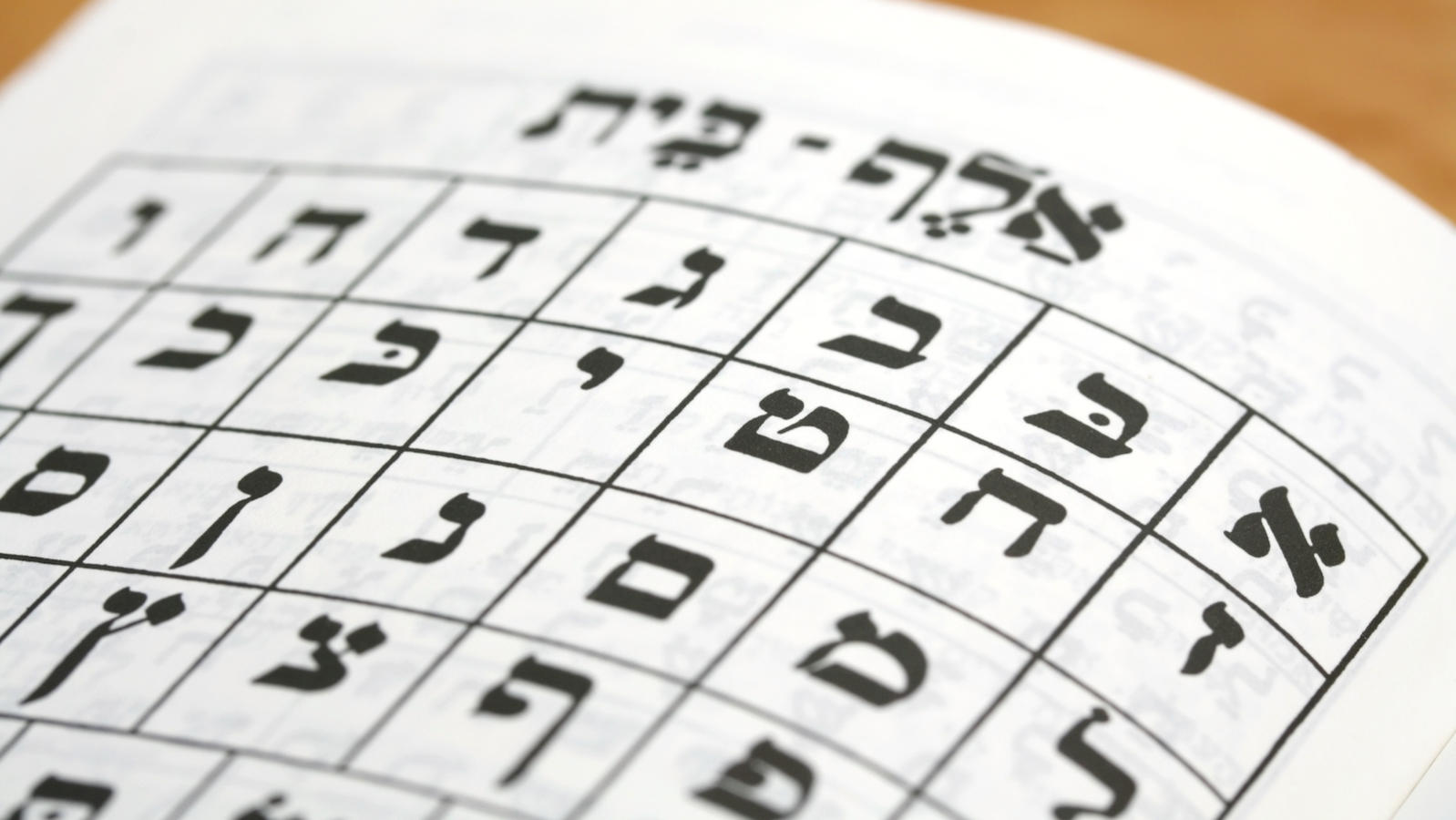Gematria is a numerological system by which Hebrew letters correspond to numbers. This system, developed by practitioners of Kabbalah (Jewish mysticism), derived from Greek influence and became a tool for interpreting biblical texts.
In gematria, each Hebrew letter is represented by a number (for example, aleph = 1, bet = 2, etc.). One can then calculate the numerical value of a word by adding together the values of each letter in it. In the realm of biblical interpretation, commentators base an argument on numerological equivalence of words. If a word’s numerical value equals that of another word, a commentator might draw a connection between these two words and the verses in which they appear and use this to prove larger conceptual conclusions.
The Hebrew Alphabet in Numerology
1 Aleph א
2 Bet ב
3 Gimel ג
4 Daleth ד
5 Heh ה
6 Vav ו
7 Zayin ז
8 Het ח
9 Tet ט
10 Yud י
20 Kaf כ
30 Lamed ל
40 Mem מ
50 Nun נ
60 Samech ס
70 Ayin ע
80 Peh פ
90 Tzady צ
100 Koof ק
200 Reish ר
300 Shin ש
400 Taf ת
500 Kaf (final) ך
600 Mem (final) ם
700 Nun (final) ן
800 Peh (final) ף
900 Tzady (final) ץ
Who Believes in Gematria?
While gematria was used periodically in the Talmud and Midrash, it was not central to rabbinic literature. The rabbis occasionally employed gematria to help support biblical exegesis, but did not rely on it heavily. They were much more invested in the use of logical reasoning and argumentation to support their positions.
With your help, My Jewish Learning can provide endless opportunities for learning, connection and discovery.
However, gematria is essential to Kabbalah, the Jewish mystical tradition. The very basis of the kabbalistic cosmological system rests on the belief that God created the universe through the power of the Hebrew letters along with their numerical values. Indeed the many names of God and their permutations in Kabbalah have numerical values that are believed to contain potent power.
Gematria’s Core Texts
The term “gematria” comes from the Greek “geometria,” and the concept can be found in the writings of the Greek philosopher Plato. In rabbinic literature it first appears in the Baraita of the Thirty-two Rules, by Rabbi Eliezer in 200 CE. This text, which no longer exists except in references, elaborated 32 rules for interpreting the Bible. The 29th rule involved the use of gematria.
Sefer Yetzirah, the earliest kabbalistic text, believed to have been written in the 2nd century CE, was the first kabbalistic text to elaborate a system of gematria. This text is concerned with God’s creation of the universe through the powers of the Hebrew alphabet, and with the permutations of God’s name. The mystic practitioner could, it was believed, use this knowledge to harness the powers of creation. Sefer Yetzirah supposedly contains the instructions to create a golem, the legendary creature made out of mud, popularized by the Maharal of Prague in the 16th century.
In the 1200s the Hasidim of Ashkenaz (“German pietists,” a group of rabbis who practiced a mystical and ascetic form of Judaism, not to be confused with Hasidism, which developed 500 years later) used gematria in their mystical writings. Their writings influenced Abraham Abulafia of the Castilian school of Kabbalah, whose meditation techniques included contemplating different names of God. The kabbalist Moses Cordovero of Safed, Israel, in 1542 compiled a handbook called Pardes Rimonim (Garden of the Pomegranates), which includes many sections that expound on and elaborate previous systems of gematria. The Sabbatean movement of the 17th century (the followers of which believed their leader, Shabbatai Tzvi, to be the messiah) and the Hasidic movement of the 18th century built on the kabbalistic tradition, employing gematria as a tool in their mystical writings.
Famous Examples of Gematria-Based Arguments
One famous example of gematria is in the interpretation of Genesis 14:14, which appears in the Baraita of the Thirty-two Rules and in other Talmudic and Midrashic references. This verse mentions the 318 men that made up the household of Abram (later in Genesis, God changes Abram’s name to Abraham), whom he took with him to defeat the armies that had recently attacked his kinsman. The numerical equivalent of the name “Eliezer” (Abram’s servant) is 318; therefore, the text suggests that in fact it was only Eliezer that came with Abram, not all 318 men. A Hasidic text, the Kedushat Levi, uses gematria to draw additional conclusions from this verse. This text observes that the numerical value of the word “siach” (Hebrew for speaking or conversing) is 318. Therefore, the text argues that it was through the power of speaking God’s holy name that Abram defeated his enemies.
Much of gematria focuses on the various names of God and the powers of these names. The name Elohim adds up to the number 86, which equals the value of the word hateva (Nature). This equivalence leads to the conclusion that Elohim refers to the divine presence as it manifests in the physical world, as opposed to the name YHVH, which connects to the heavenly universe.
Modern Belief in Gematria
Throughout history, some people have believed that the Torah contains secrets that can be revealed by gematria and used to predict historical events. This belief continues to this day, and was popularized by Michael Drasin’s best-selling (and much criticized) The Bible Code, published in 1997. Some Hasidic communities that are steeped in the study of kabbalistic literature believe that the Torah, as read through the lens of gematria, contains clues to current events.
Skeptics, however, have noted that gematria can be employed as “proof” to support diametrically opposing positions, depending on the words and phrases one chooses to highlight and calculate. A somewhat tongue-in-cheek illustration of this involved an attempt to predict the 2016 United States presidential election through the gematria of the candidates’ names. The author of the article showed how this line of reasoning could be used just as easily to predict the victory of either candidate. Nevertheless, gematria continues to have an appeal in some quarters.
Hasidic
Pronounced: khah-SID-ik, Origin: Hebrew, a stream within ultra-Orthodox Judaism that grew out of an 18th-century mystical revival movement.
Kabbalah
Pronounced: kah-bah-LAH, sometimes kuh-BAHL-uh, Origin: Hebrew, Jewish mysticism.
Torah
Pronunced: TORE-uh, Origin: Hebrew, the Five Books of Moses.



